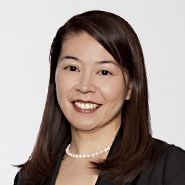Ex Parte Tsukamoto
- June 3, 2011
- Blog Post
Associated People
Ex Parte Tsukamoto (Appeal 2010-007294) decided on June 2, 2011 is a case where the Board reversed the Examiner’s obviousness rejections for the simple fact that the Examiner’s rejections were based on conjecture, not supported by evidence nor proper reasoning.
The invention in this case is to a treatment system, which includes a process chamber, a remote radical generation system coupled to the process chamber, a gas distribution system, a diffuser plate, a pedestal coupled to the process chamber, and a vacuum pumping system coupled to the process chamber. The limitation at issue is “said gas distribution system comprises a diffuser . . ., and wherein said diffuser comprises a first entrant region having a substantially conical volume and a second entrant region having a substantially conical volume” (emphasis added).
There were 21 separate rejections that were the subject of the Appeal but those rejections were focused to the independent claims 1 and 39 and a subset of the dependent claims. The Board appreciated that focus rather than having to plod through such a multitude of rejections.
The main combination of references applied in the rejections were Zhao and Nishitani. The primary reference Zhao was conceded to not teach the diffuser in the claims, and thus the Examiner cited Nishitani arguing that the combination was proper “to provide an alternate and equivalent gas injecting system (diffuser) in the apparatus of Zhao [] as taught by Nishitani.” As to the application of a feature in a CVD apparatus to a remote plasma generation system, the Examiner argued, unconvincingly, that the “shape of the diffuser has nothing to do with providing a plasma generation system or vice-versa.”
In short, the Board found that the Examiner’s arguments were severely lacking and citing KSR ([R]ejections on obviousness grounds cannot be sustained by mere conclusory statements; instead, there must be some articulated reasoning with some rational underpinning to support the legal conclusion of obviousness.” KSR Int’l. v. Telejlex Inc., 550 U.S. 398, 418 (2007))) sided with Appellants.
Another interesting point in this case is the Examiner’s alleged case of equivalence. Notably, the Board reached into an old CCPA case agreeing with the Appellants that “functional equivalence does not necessarily establish obviousness” (In re Scott, 323 F.2d 1016, 1019 (CCPA 1963) (“Expedients which are functionally equivalent to each other are not necessarily obvious in view of one another.”)).










 Counseling & Strategic Advice
Counseling & Strategic Advice IP Transactions
IP Transactions Litigation
Litigation PTAB Proceedings
PTAB Proceedings Start-Up
Start-Up Technology Transfer
Technology Transfer Trademark & Designs
Trademark & Designs U.S. Patent Procurement (Application Drafting & Prosecution)
U.S. Patent Procurement (Application Drafting & Prosecution)








